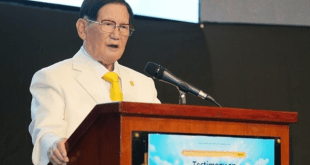Wars have been fought for the expansion of glory, kingdoms, accession, invasion and political domination. One of the major fallouts of war is pestilence affecting the local civilian population. Pestilence is one of the reasons behind the decimation of civilizations and their armies. The end of World War II in 1945 witnessed the outbreak of diseases among the weakened population. One of such dreadful disease that succumbed the mass campaign was yaws about which we’ve discussed below.
- Yaws, circulated by a micro-organism, is a painful condition which led to total disability and gross disfigurement. Found in the poor, tropical and rural areas this disease was contracted by broken skin with an incubation period of 9-90 days. About 20 million people were affected by this disease worldwide in the early 1950s, half of which were Asians. Penicillin’s invention cleared the ugly pink lesions and also the disease from the body. The disease mainly affected children who are below 15 years, living in tropical, poor, rural areas.
- UNICEF was involved in a campaign against yaws that was based in Indonesia. Teams of health workers located people with the disease and the professionals did the treatment. Over 100,000 yaws cases were treated in a single month in 1955.
- In Thailand, about 1 million cases had been treated which eventually led to the possibility of full eradication of yaws in Asia. The miraculous effect of the yaws treatment incited the beginning of other health campaigns.
- But the initial success of the mass campaign did not last long. Most likely, overlook of infections and the lagging efforts of health workers were noticed. Their failure to trace the cases and treat them led to the reappearance of yaws in many regions. What made the re-infection possible is the absence of vaccines with no long-term immunization.
- Recurrence of yaws occurred with the news of the outbreak of the yaws reported in the rural village of Thailand. With an attack rate of 23% the disease affected people belonging to the age group of 2 to 79 years, most of whom were children under 15 years old.
460,000 new cases were estimated annually since programmes were discontinued in most of the countries. However, the WHO did not give up the war against yaws. In 2007, countries made efforts to reopen campaigns eventually reaching the eradication of yaws in South-East Asia in 2012.
 Newspatrolling.com News cum Content Syndication Portal Online
Newspatrolling.com News cum Content Syndication Portal Online






